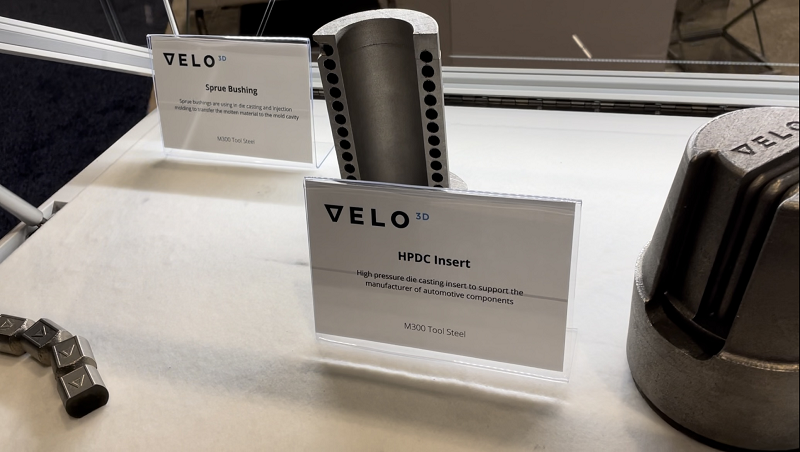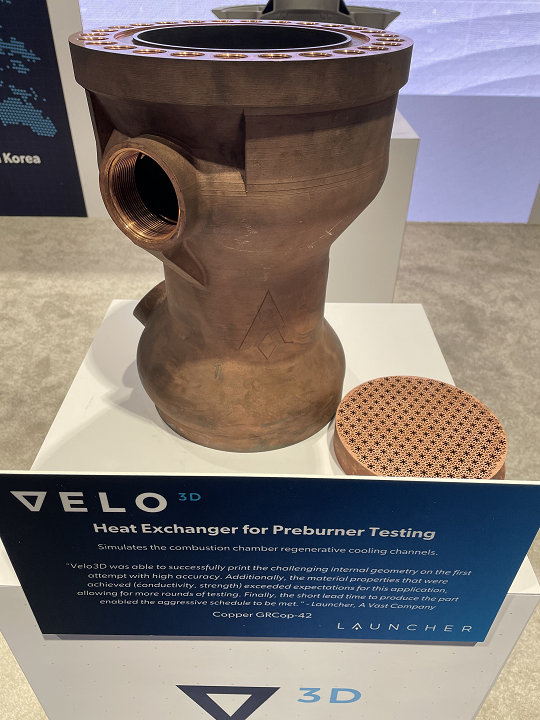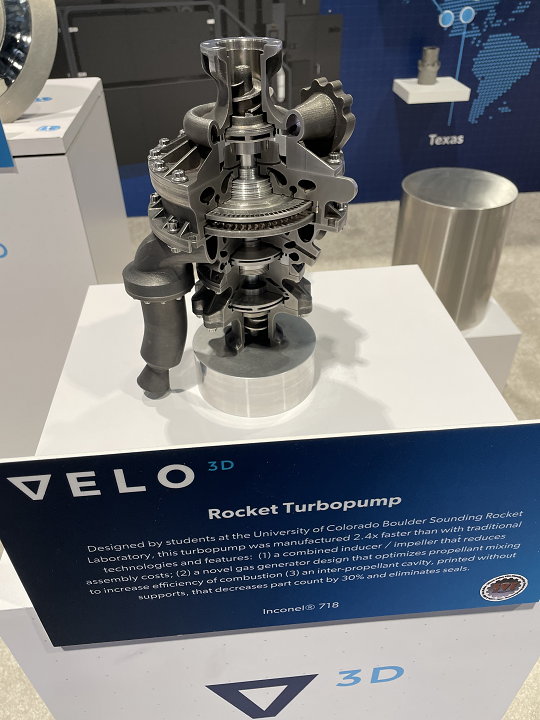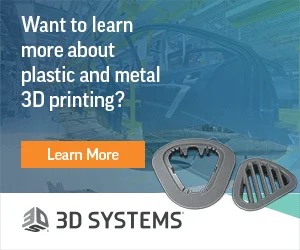From Oil to Automotive and Space, Velo3D Brings Repeatability and New Materials to Metal 3D Printing
As metal 3D printing firm Velo3D (NYSE: VLD) expands from its established verticals, like space, oil and gas, and military, the company has had to develop newer materials that suit the needs of industry at large. At the same time, Velo3D continues to push into its bread-and-butter verticals with the use of metal powders that drive those applications further. I spoke to Dan Sorenson, Senior Director of Public Relations and Social Media, who was able to discuss the progress it’s made with the automotive sector using its new M300 tool steel, as well as the deployment of NASA’s GRCop-42, and how Velo3D has brought repeatability to the oil and gas sector.
Velo3D recently qualified M300 tool steel for use in its Sapphire 3D printers, and now counts two major U.S. automotive manufacturers as customers. But, Sorenson said the company is also “seeing a lot of interest” for its use in high pressure die cast (HPDC). A sprue bushing was on display—3D printed out of M300—which transfers molten material to the mold cavity in die casting and injection molding. The conformal cooling channels inside print without supports.
“You inject molten metal into it. And then the conformal cooling channels control the cooling to cool at the proper speed, which in turn prolongs the life of the die itself,” he explained. “So, you know, if you’re GM and you’re cranking out all of these car parts, you have minimal downtime, because you don’t have to swap out the inserts as much. It also, in a lot of cases, will yield a stronger product, because of the speed of the cooling.”
There were also 3D printed flow control valves, printed out of Inconel 718. These choke valves are used in oil and gas production, an industry which has increased its adoption of 3D printing in the last few years. Sorenson said the fact that a digital supply chain can be created with 3D printing is a major benefit here.
“We showed that you could take a legacy design, slightly rework it for 3D printing, and 3D print it all in one piece,” he said. “The goal was to show that you could reverse engineer it and 3D print it. Which we did, but then they were like, let’s prove that we can get identical results across multiple printers with the same print file. So all of these parts were produced on different machines on multiple continents. And I think there’s actually more, there were 12 valves total.”
Sorenson said all the choke valves performed “within spec” when they were tested, which proves that repeatable results can be achieved and that “you can scale up as you need to.”
“What’s really interesting about this is because, imagine you are producing parts at somewhat of a volume. As your demand increases or decreases, you may need more machine power. And so you can easily offload that to one of our contract manufacturers. So maybe you start with a contract manufacturer, and as you build up demand, maybe you bring the printing in-house. And then you can use that to kind of scale up or down as you need to.”
The last thing Sorenson showed me was a heat exchanger for pre-burning of fuel. This was printed out of copper alloy GRCop-42, developed by NASA for heat transfer properties with high tensile strength. Liquid oxygen is pumped in through the top, which is then combusted so it turns into gas oxygen.
“And then it travels through the body, which has this kind of crazy structure,” he explained. “It travels through that and then out the bottom.”
Fuel is being pumped in and out, and once it’s pumped through and preheated, it meets with the oxygen for the final combustion.
Subscribe to Our Email Newsletter
Stay up-to-date on all the latest news from the 3D printing industry and receive information and offers from third party vendors.
You May Also Like
Simulation Complete: Pioneer Crew Wraps Up Year-Long Mission in 3D Printed Mars Habitat
After 378 days of living in a Mars-like 3D printed habitat, NASA’s Crew Health and Performance Exploration Analog (CHAPEA) crew emerged on July 6, 2024, bringing with them vital insights...
Alquist 3D Learns Some Lessons for the Construction 3D Printing Industry
The demolition of a home 3D printed by Alquist 3D spread like wildfire when it was reported last winter. While many took the opportunity to express their skepticism over additive...
Texas Cracks Down on Illegal Gun Switches, Including 3D Printed Ones
Texas has unveiled Operation Texas Kill Switch, a new initiative to target illegal machine gun-conversion devices, commonly known as “switches.” These tiny devices, often no bigger than an inch, can...
UK Utility Company Launches Hub for Wastewater “Printfrastructure”
With homebuilding serving as the primary marketing vehicle for additive construction (AC), we’re starting to see concrete 3D printing further drive its way into other areas of the architecture, engineering,...






































